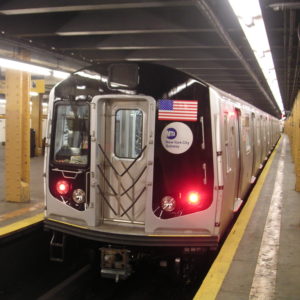When one thinks about research, there are certain images that come to mind: a student hunched over an old book in an empty library, or a solitary scientist in a lab coat mixing chemicals or observing animals. Emily McLean ’20 has done her fair share of the first type, as a potential Anthropology major with a strong interest in American History.
Emily is also my suitemate, and one day I heard her talking about an unfamiliar, unexpected genre of research: the research required for successful world building–the creation of a believable reality–in creative writing.
Emily was writing a short story set in New York City. Her protagonist, Connor, lived in Inwood (on the outskirts of Queens) but worked at a school in Manhattan, and thus had to travel frequently by subway. It felt critical to her to get this part of the story right: “in fiction, you really want to avoid anything that will snap the reader out of the story and back into reality, so it was important to get every detail of Connor’s commute right. If someone familiar with New York City were to read the story and notice a mistake, it would ruin the experience for them.” But Emily couldn’t conduct any onsite research due to travel expenses and the timing of her schoolwork, so she had to improvise. She “used Google Earth Street View to take a walk around all the neighborhoods [she] had set scenes in,” observing details that would later serve to enrich her story.

But there was still a lot to do. One of the most climactic scenes of Emily’s story took place inside a subway car, and she needed to do the setting justice. “Being stuck inside the subway really ramps up tension—you’re in an enclosed space where you’re prevented from leaving by mechanical doors, and you’re stuck underground, so everything around you just screams confinement. It’s the perfect place to set a confrontation, because the characters can’t just leave the scene; they have to stay there and flush it all out.” So she embarked on an internet-enabled adventure, reading about the history of the New York City subway system, finding her way inside a subway car through pictures and videos, and reading accounts of underground confrontations in order to craft the perfect atmosphere for her readers.
One last task remained: in order to realistically portray Connor’s wife’s slow death from lung cancer, and Connor’s thought process through the experience, she had to dive into the stories of suffering cancer patients and their grieving loved ones. “Thankfully, I haven’t had any personal experience with lung cancer, so I really had to fill in those gaps. It was really sad—there were all the guides to confronting death and what to expect from someone dying of lung cancer, and I watched video testimonies and learned about the physical and emotional symptoms and stages. What I found most interesting was that people will tell you what to expect from the dying person, but there’s not much focus on the person watching them die; it’s hard to find testimony on how they feel through the process. That was a really unpleasant thing to research, but it was critical to the veracity of my story, and it was important to me to do justice to the people whose real-life stories were contributing to my fictional one.”
I asked Emily how she felt this research experience differed from the more traditional research she had done in the past, and she brought up the important distinction between a primary and secondary source, and the role that plays in historical research. “A lot of this felt more real, because I wasn’t reading someone else’s interpretation of something—I was really experiencing and interpreting it myself. In history you might find some primary sources, but for the most part you rely on journal articles where others have interpreted the material for you. It allows you to mold the research to what you feel is important to your story. That’s why I love fiction—it’s what you feel and experience, and you’re trying to find a way to express that to other people and draw them into your mind through a fictional situation.”
Emily’s experience made me reconsider the way we tend to define research, and to think about the work that must have gone into creating a convincing setting for some of my favorite fiction books. Though many of us fail to realize it, research can play a huge role in a variety of disciplines that we do not immediately associate it with, most prominently the artistic fields. For those of us conducting more conventional research, it can be extremely valuable to delve into unfamiliar types of research to broaden our skills as researchers in our own field.
— Alexandra Koskosidis, Engineering Correspondent

